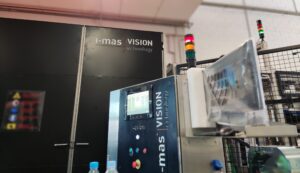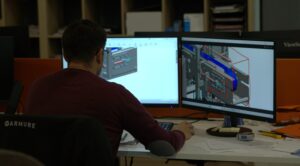Parametric design has gone from being an academic curiosity to become a strategic tool for engineers, designers and R&D teams that need to iterate quickly, manufacture customized series or adapt products to new markets with minimal cost. Unlike traditional modeling, where each size or variant involves reworking parts and drawings, the parametric approach allows the product to be controlled through a set of variables: modify a few figures and the model is automatically updated, respecting geometric relationships, tolerances and functional requirements.
In this article we explain how to apply parametric design in industrial projects, what benefits it brings when it comes to scaling and why it is a key part of the workflow. This approach is especially useful for optimizing design and product development processes, reducing errors and shortening lead times in the manufacture of functional prototypes or short series.
What does parametric design mean?
In the context of product design and development, parametric design consists of defining geometry using parameters-dimensions, radii, angles, formulas or tables-that govern each element. In CAD programs such as SolidWorks, Siemens NX or Fusion 360, this translates into equation relationships and “product families.” If you change the length “L” or thickness “t”, the entire model is readjusted, including dependent bores, rebates or assemblies.
What are the advantages of parametric modeling?
- Avoid redrawing errors: nothing is “loose” in space.
- Accelerates iterations: CAD time is invested once; scaling becomes a matter of minutes.
- Facilitates standardization: a single file serves as the basis for a complete range.
Scaling in product design and development: use cases
Parametric design makes it possible to effectively address different scenarios in which a product needs to be scaled. For example, in the development of series that include different sizes or power ranges – such as electronic housings, medical equipment or metal structures – the use of parameters such as height, width and depth allows all variants to be generated from the same base file, without the need for redrawing.
It is also very useful when adapting a design to different manufacturing processes. A part that was initially conceived for 3D printing can be easily adjusted to be produced by CNC machining, simply by reconfiguring parameters such as thicknesses, radii or tolerances. Finally, in internationalization contexts, where the same product must meet different standards depending on the market (e.g. metric vs. UNC threads), parametric configurations make it possible to manage these variants without duplicating files or creating document control errors.
Best practices for robust parametric modeling
- Plan the parameters from the briefing: define what will vary and what should remain constant.
- Name the variables descriptively (e.g., “CoverThickness”, “ShaftDiameter”) so that any team member can understand them.
- Group equations on a global sheet within the CAD; avoids cascades of cross-references that are difficult to debug.
- It uses “skeleton sketches”: master sketches that control the general shape and serve as the basis for the rest of the features.
- Validate maximum and minimum limits for each parameter; do not rely on the software to prevent interference.
Impact on costs and time-to-market
Although parameterizing a design involves an initial investment in time and planning, the return is immediate on projects with frequent variations. Savings in engineering hours on range adaptations can reach up to 70% in some sectors, especially where custom series or made-to-order products are involved.
In addition, by centralizing all variants in a single parametric model, the need to manufacture multiple prototypes is reduced, which also translates into savings in materials and validation times. In commercial terms, this agility makes it possible to respond quickly to specific customer requests without compromising deadlines.
How we apply parametric design at I-MAS to optimize product development
In the product design and development department of I-MAS we apply parametric design as the core of our integrated development methodology. This approach allows us to build more adaptable, fast and efficient solutions, from initial concept to final manufacturing. Thanks to parameterization, we can modify 3D models in a matter of minutes, adapt them to different functional validation conditions and analyze their structural behavior through FEM simulations, all without redoing the design from scratch.
The result is clear: better designed products, with more predictable cost and ready to scale without friction.
All this makes parametric design a clear competitive lever: less resources invested, more flexibility in design and a direct improvement in time-to-market.
At I-MAS, we have been helping innovative startups and companies turn ideas into successful products for more than two decades. Our comprehensive approach to product design and development covers all phases of the process: from initial conceptualization, technical and functional design, rapid prototyping and validation, to readiness for manufacturing.
If you are interested in learning more about our services or have a project in mind, do not hesitate to contact us!



